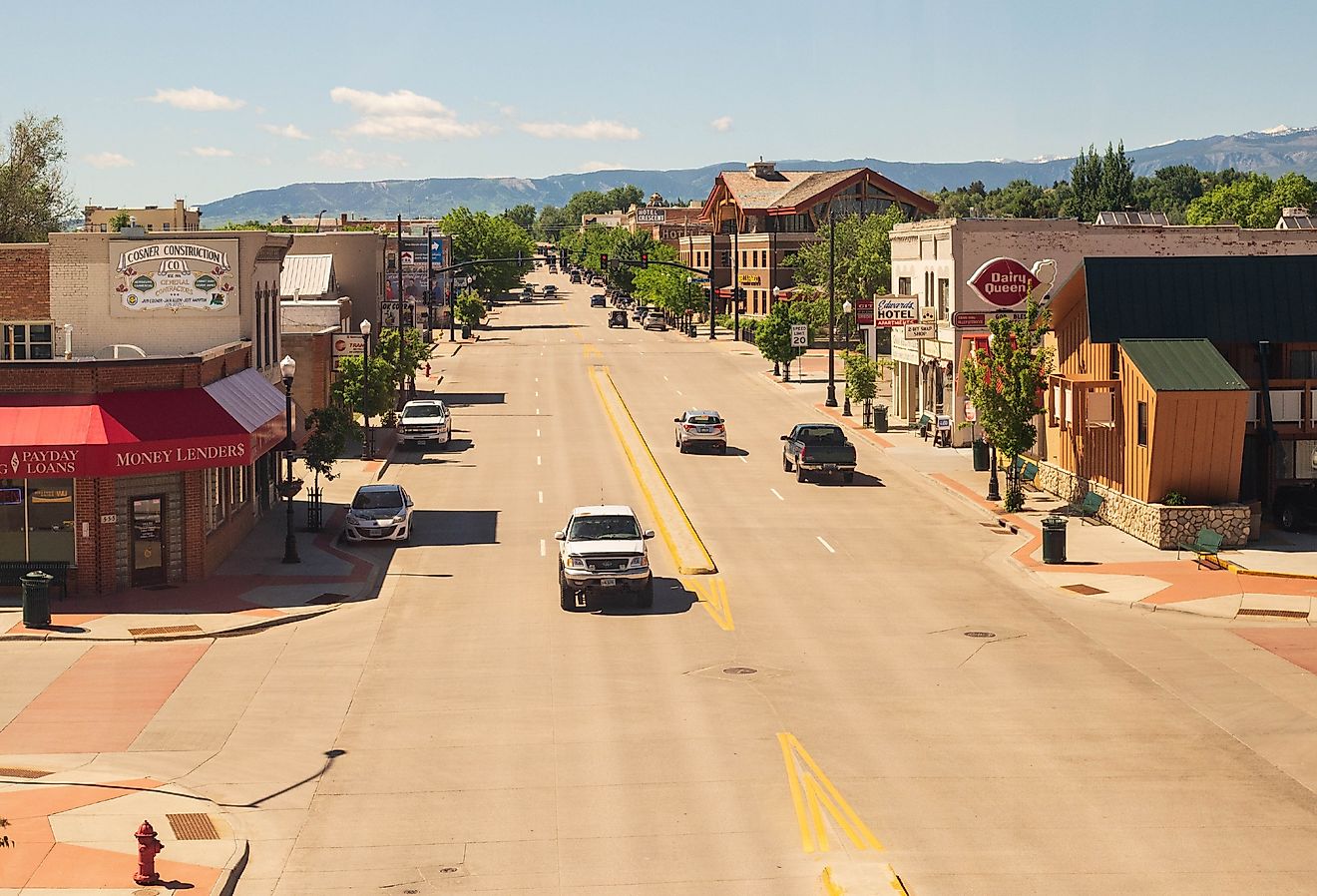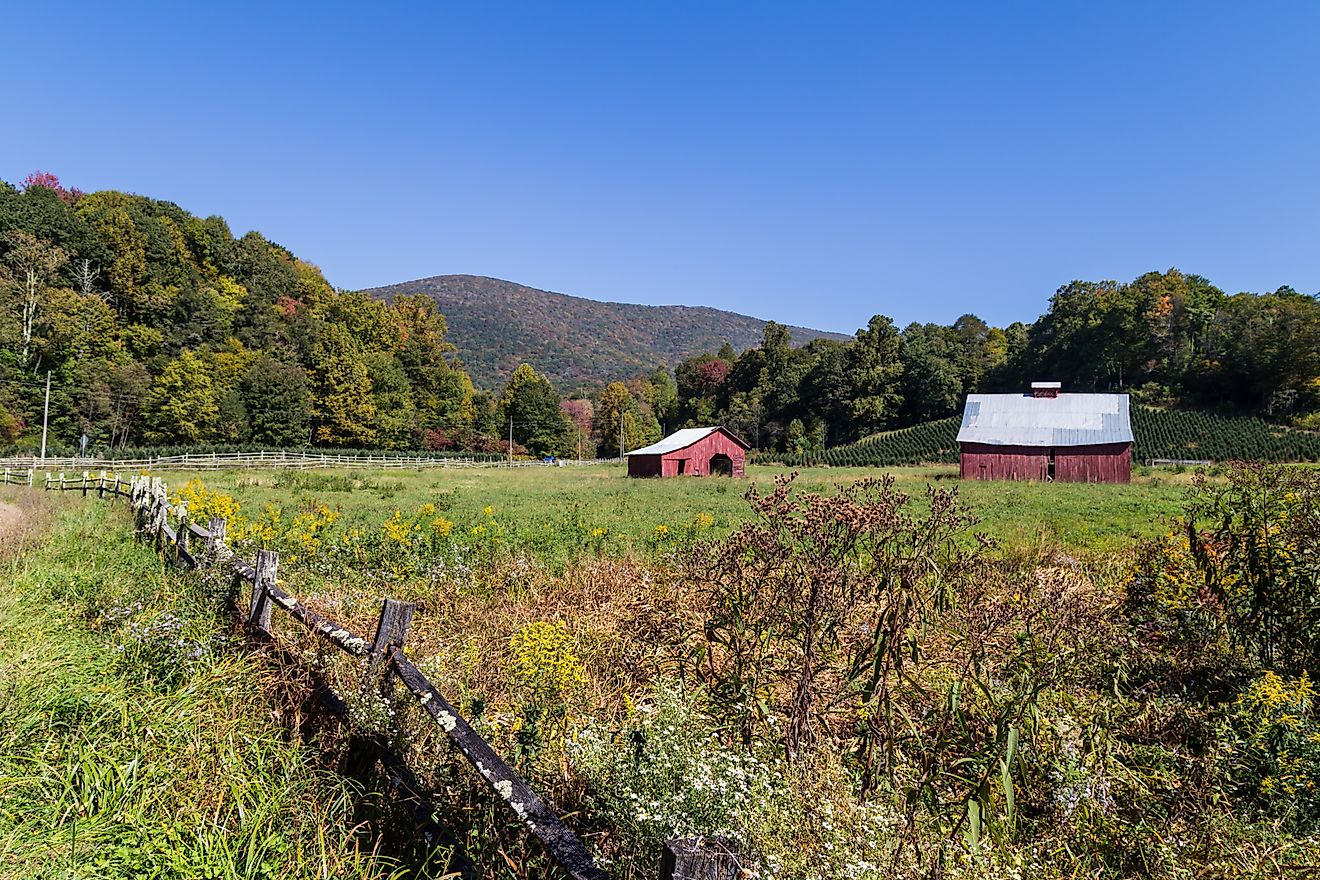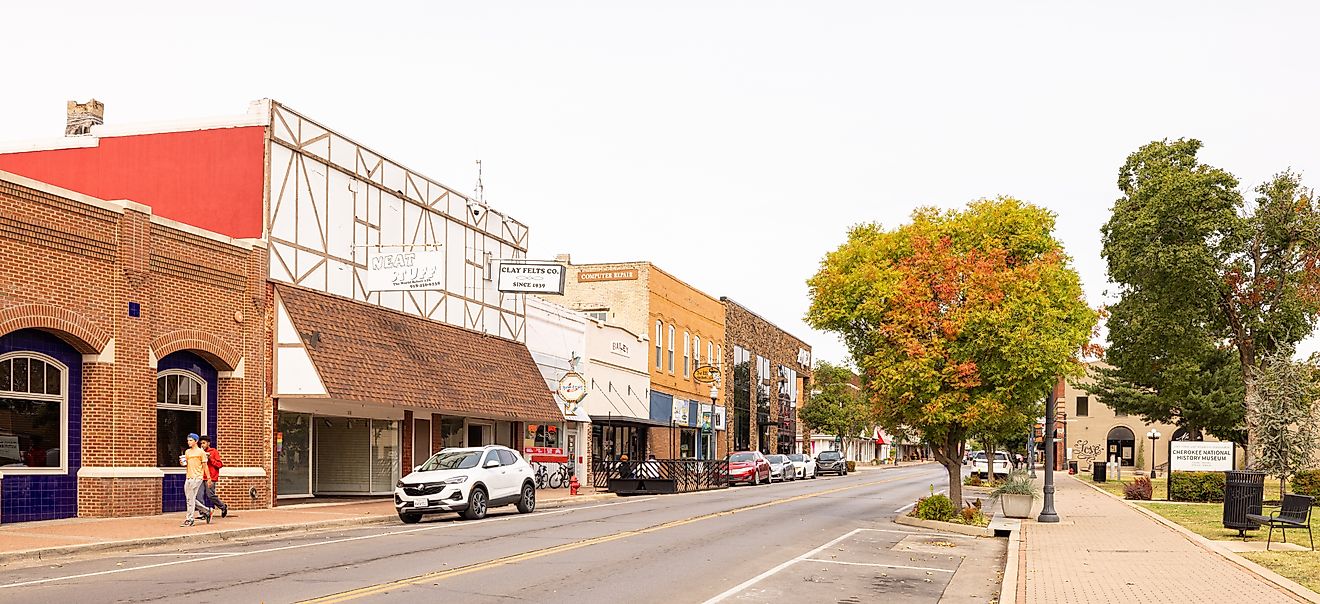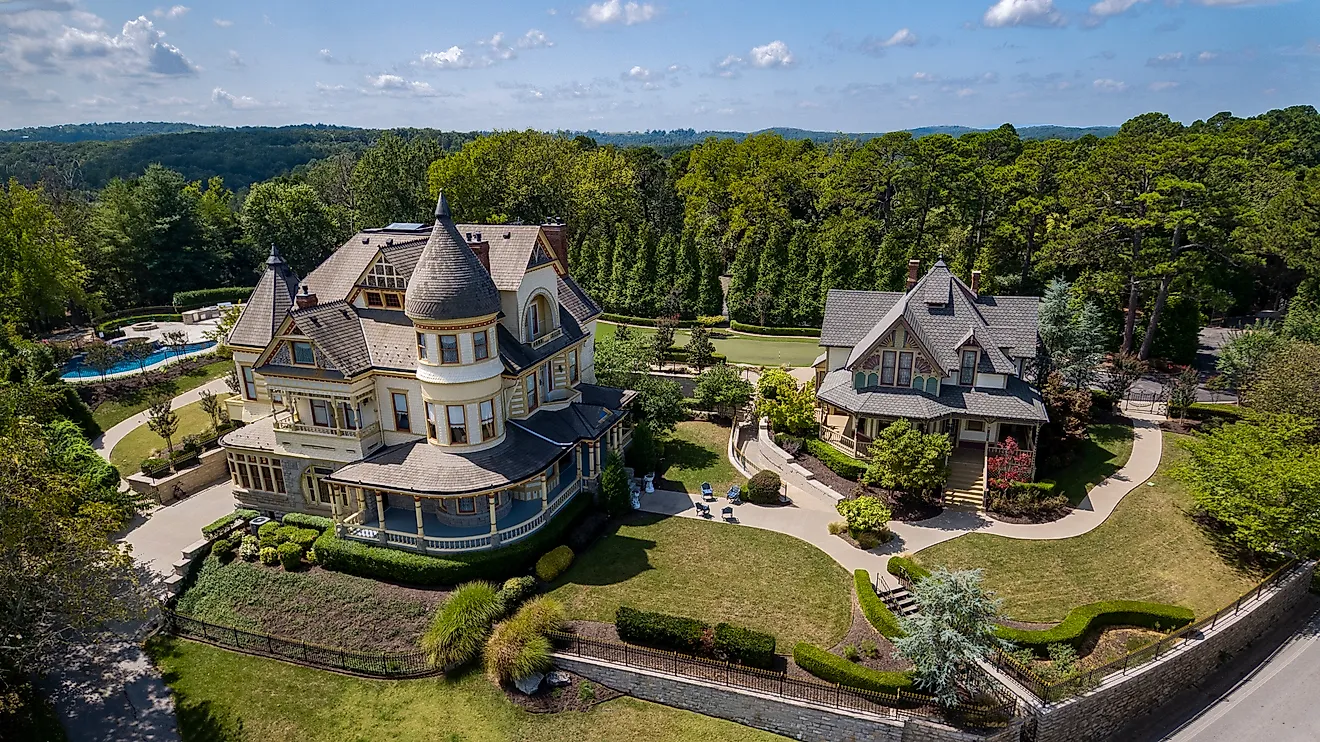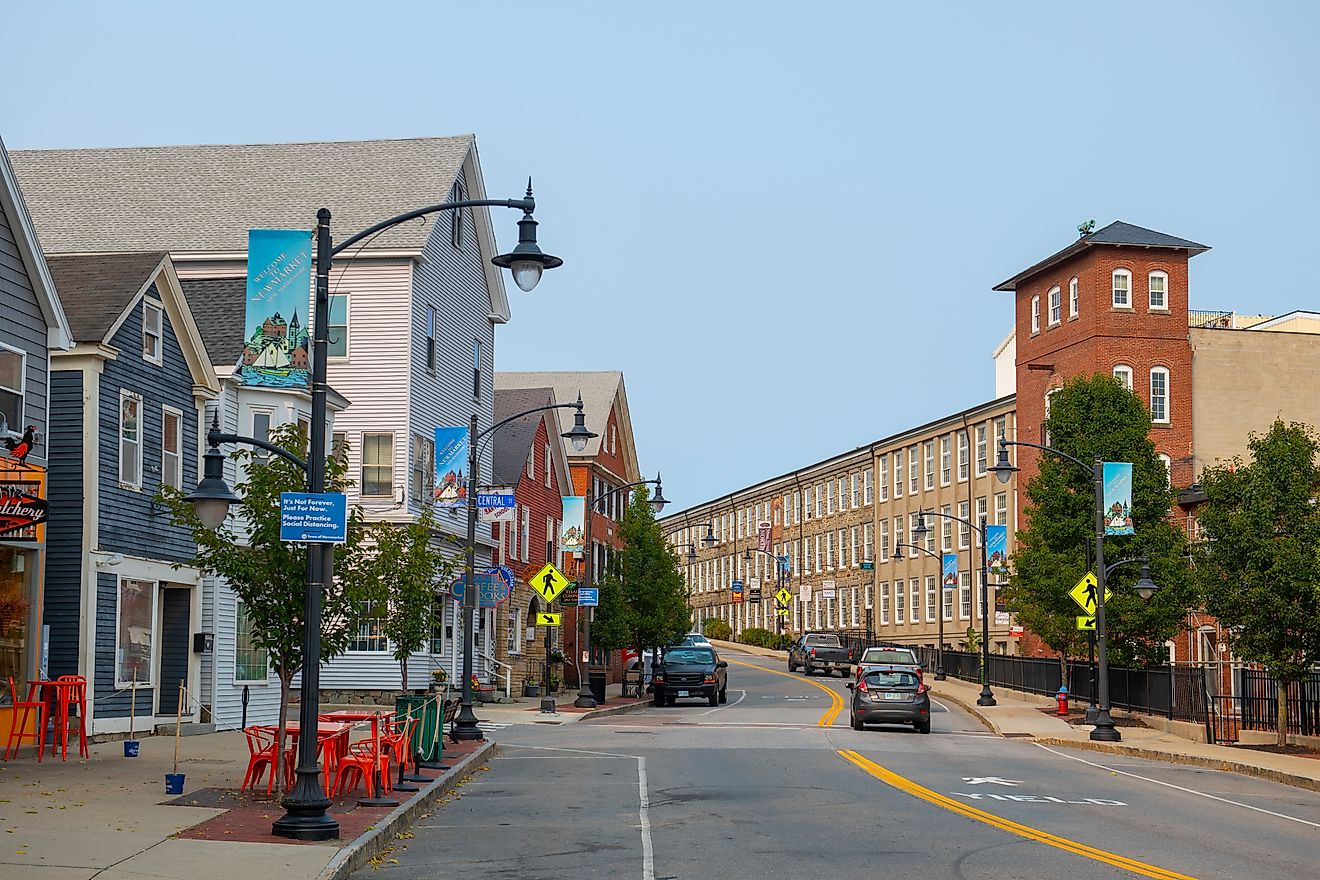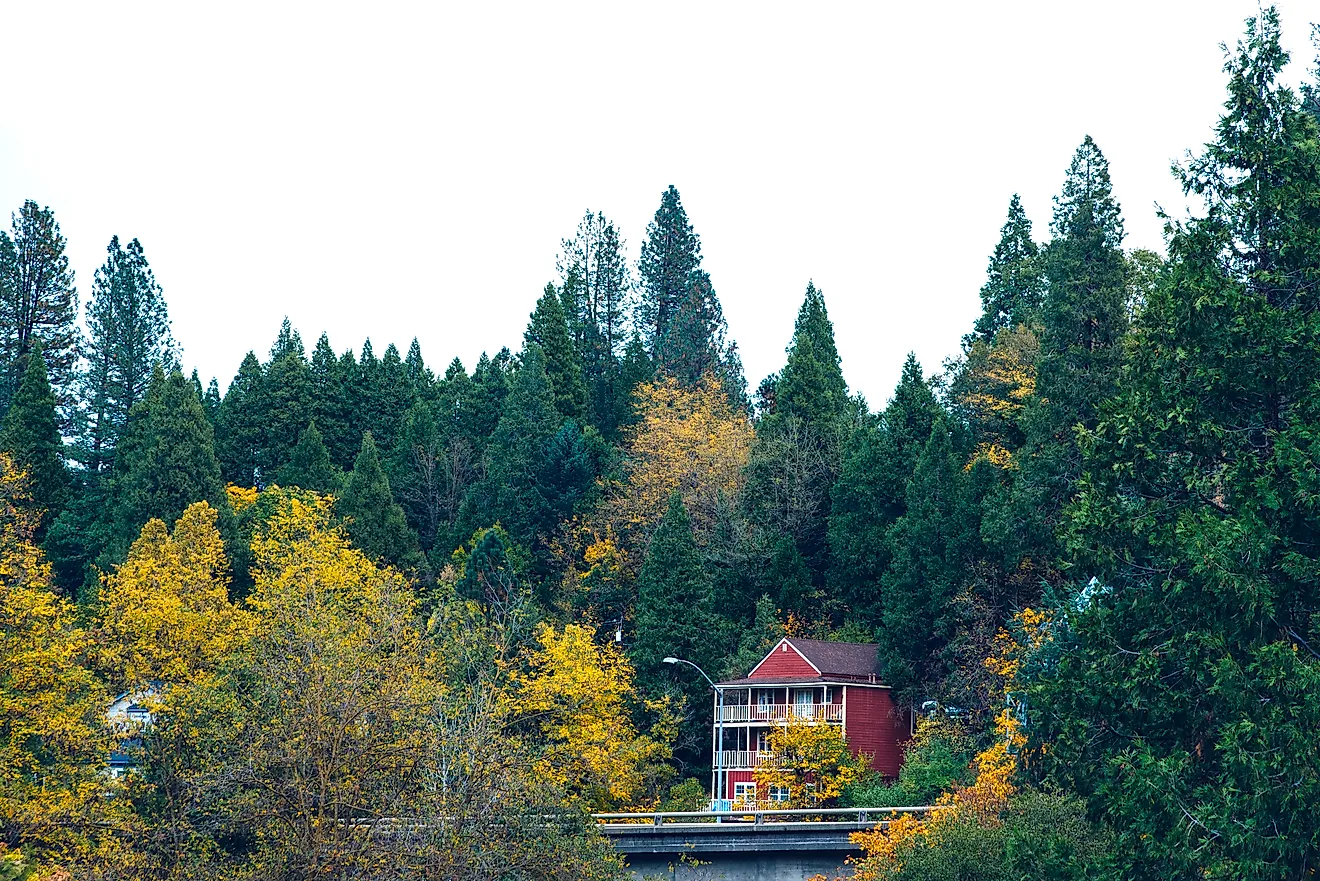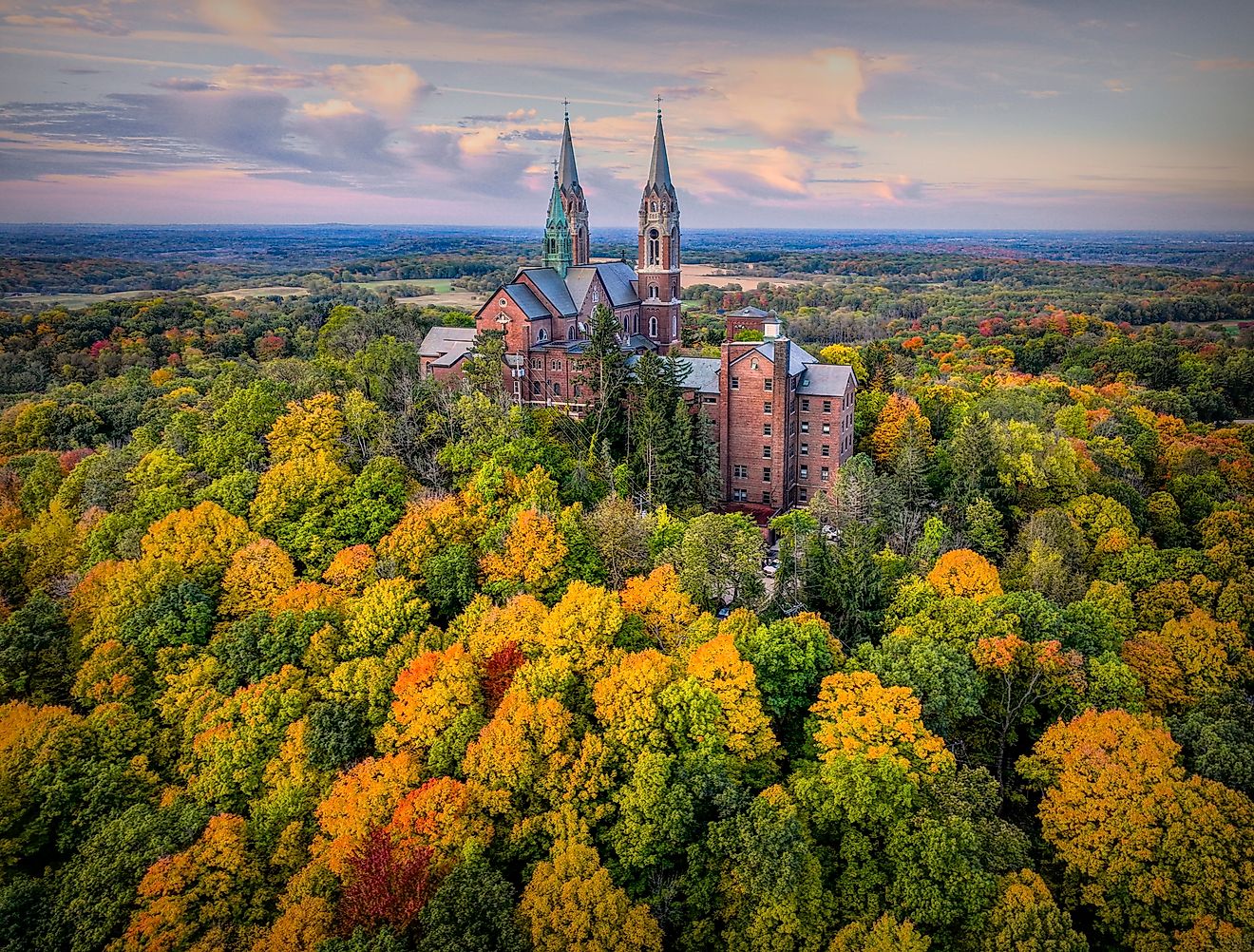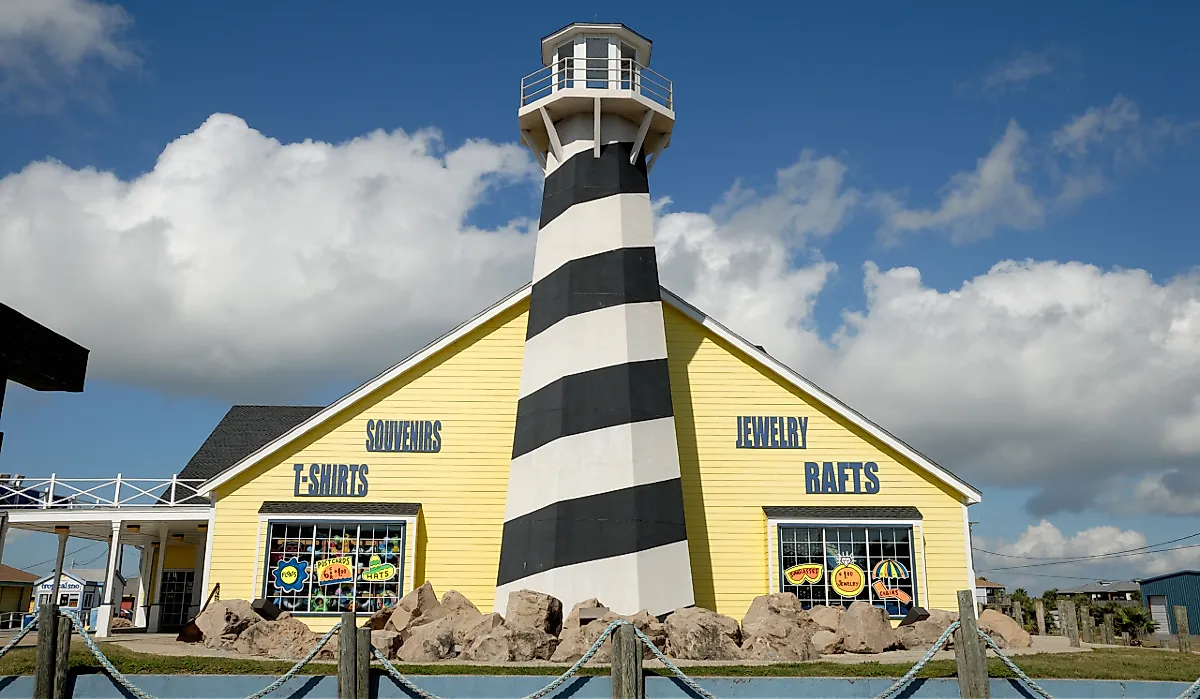
12 Cutest Small Towns In Texas
Texas' small towns in 2025 continue to enchant visitors with their unique blend of frontier spirit, cultural heritage, and Southern hospitality. From the rolling Hill Country dotted with wildflowers to charming Main Streets lined with century-old storefronts, these communities preserve the essence of the Lone Star State while offering modern comforts and unexpected sophistication.
Whether you're drawn to German-influenced villages, artistic havens, or historic cotton towns reborn as destination getaways, Texas' cutest small towns prove that bigger isn't always better when it comes to capturing the heart of this diverse state.
Fredericksburg
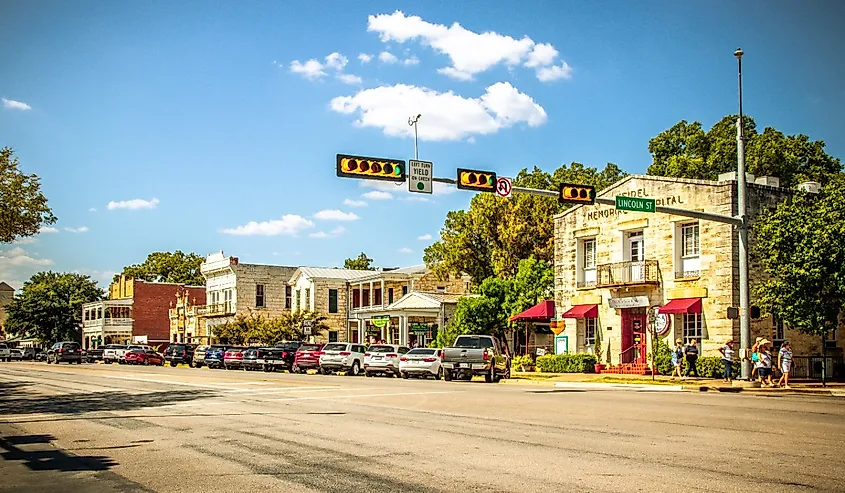
German heritage runs deep in this Hill Country gem of approximately 11,949 residents, where limestone buildings and biergartens reflect the town's 1846 founding by German immigrants. Fredericksburg balances its Old World charm with a thriving wine industry, making it one of Texas' premier weekend destinations.
Main Street stretches for blocks with over 100 specialty shops, galleries, and tasting rooms housed in 19th-century buildings, while Marktplatz anchors the downtown with its distinctive eight-sided Vereins Kirche Museum, a replica of the 1847 German community center. The National Museum of the Pacific War honors Fleet Admiral Chester Nimitz, a Fredericksburg native, with extensive exhibits spanning six acres and authentic wartime artifacts.
Wine enthusiasts explore the surrounding Texas Wine Country, stopping at establishments like Becker Vineyards, where tastings occur in a reconstructed 1800s stone barn surrounded by lavender fields. For authentic German fare, Der Lindenbaum serves schnitzel and bratwurst in a building dating to 1860.
Marfa
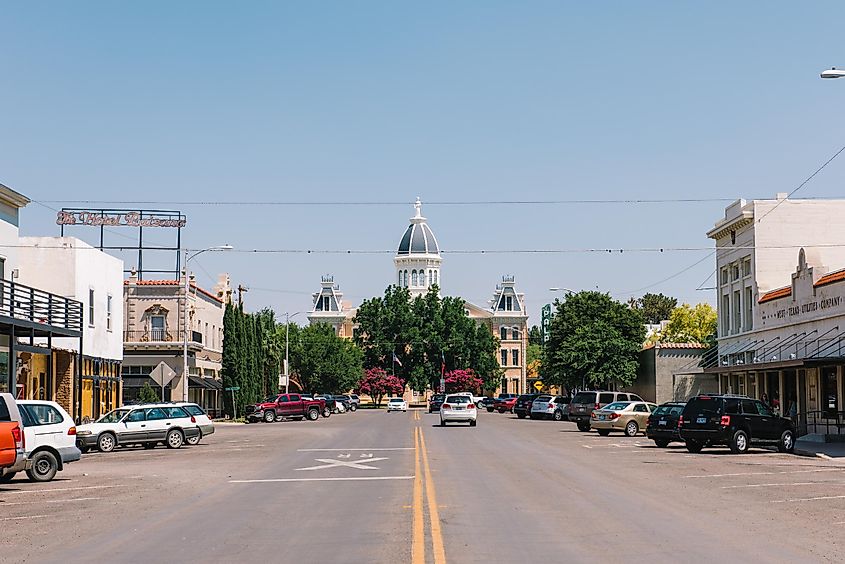
This remote West Texas town of about 1,605 residents has transformed from a railroad water stop into an internationally recognized art destination. Marfa's stark desert landscape and minimalist aesthetic attract artists, filmmakers, and travelers seeking something decidedly different from typical tourist towns.
The Chinati Foundation, established by artist Donald Judd, showcases massive permanent installations of minimalist and contemporary art on the grounds of the former Fort D. A. Russell, a historic military base in Marfa. Architecture enthusiasts photograph Prada Marfa, a permanent sculpture resembling a luxury boutique standing alone in the desert 26 miles northwest of town.
After sunset, curious visitors head to the Marfa Lights Viewing Area nine miles east on Highway 90, where mysterious lights have appeared in the desert sky for over a century. For dining, Cochineal Marfa offers upscale cuisine in an intimate setting, while Bar Saint George provides a sophisticated lounge experience at the Hotel St. George, serving New American small plates and craft cocktails in a modern, art-filled space.
Wimberley

Nestled where Cypress Creek meets the Blanco River, Wimberley charms visitors with its artsy atmosphere and Hill Country beauty. This community of roughly 2,890 residents draws weekend crowds to its galleries, swimming holes, and the famous Wimberley Market Days, held the first Saturday of each month from April through December.
Blue Hole Regional Park offers a spring-fed swimming hole beneath towering cypress trees, where locals and visitors cool off in crystalline waters during hot Texas summers. The town square features dozens of galleries and boutiques, while Wimberley Glassworks allows visitors to watch artisans create colorful glass pieces and try glassblowing themselves.
For scenic views, drive Ranch Road 12 (also known as Devil's Backbone), which winds along a limestone ridge offering panoramic vistas of the surrounding valleys. The Leaning Pear serves farm-to-table cuisine in a converted 1900s home, combining fresh ingredients with Hill Country hospitality.
Alpine
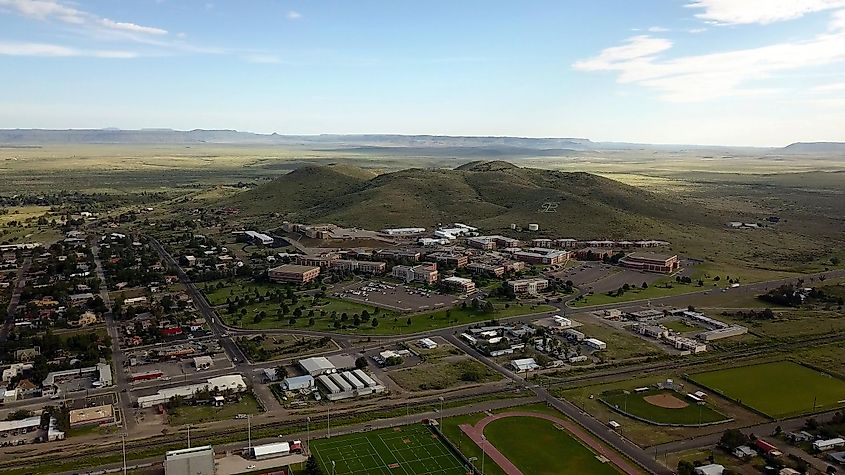
Gateway to Big Bend Country, Alpine sits at 4,500 feet elevation in the high desert of Far West Texas. This town of approximately 6,039 residents serves as a cultural hub for the vast Trans-Pecos region, combining frontier heritage with surprising sophistication thanks to Sul Ross State University.
The Museum of the Big Bend on the Sul Ross campus chronicles the natural and human history of the Big Bend region through extensive exhibits on ranching, Native American cultures, and frontier life. Historic Downtown Alpine features buildings from the early 1900s along Holland Avenue, housing galleries, bookshops, and cafes that cater to adventurers heading to nearby Big Bend National Park, just 80 miles south.
Railroad enthusiasts appreciate Alpine's role as a division point on the Southern Pacific line, with vintage locomotives occasionally visible in the rail yard. Reata Restaurant serves upscale cowboy cuisine in an atmosphere celebrating West Texas ranch culture, while La Casita has dished up authentic Mexican food to generations of locals and travelers in a casual, family-friendly setting since 1952.
Dripping Springs
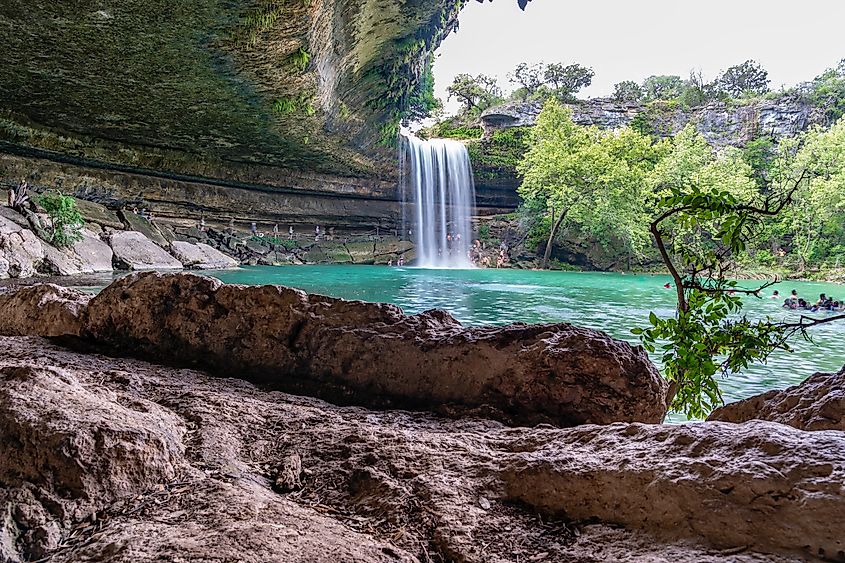
Known as the "Gateway to the Hill Country," Dripping Springs has grown to about 5,000 residents while maintaining its small-town character. Located just 25 miles west of Austin, this community has become a premier destination for distilleries, breweries, and wedding venues set among rolling hills and centuries-old oak trees.
Hamilton Pool Preserve showcases a stunning natural grotto and 50-foot waterfall where water cascades over a limestone overhang into an emerald pool. Advance reservations are required for this popular swimming spot. The town has earned recognition as the "Wedding Capital of Texas" with numerous scenic venues, while spirits enthusiasts tour Dripping Springs Distilling, which produces vodka, gin, and whiskey using local ingredients.
Jester King Brewery operates a farmhouse brewery on 165 acres, offering spontaneously fermented beers and pizza in a rustic setting with Hill Country views. For authentic Texas barbecue in a laid-back setting, stop by Pig Pen BBQ in Dripping Springs, where you can savor perfectly smoked brisket, ribs, and hearty burgers, all best enjoyed with a cold local beer.
Salado
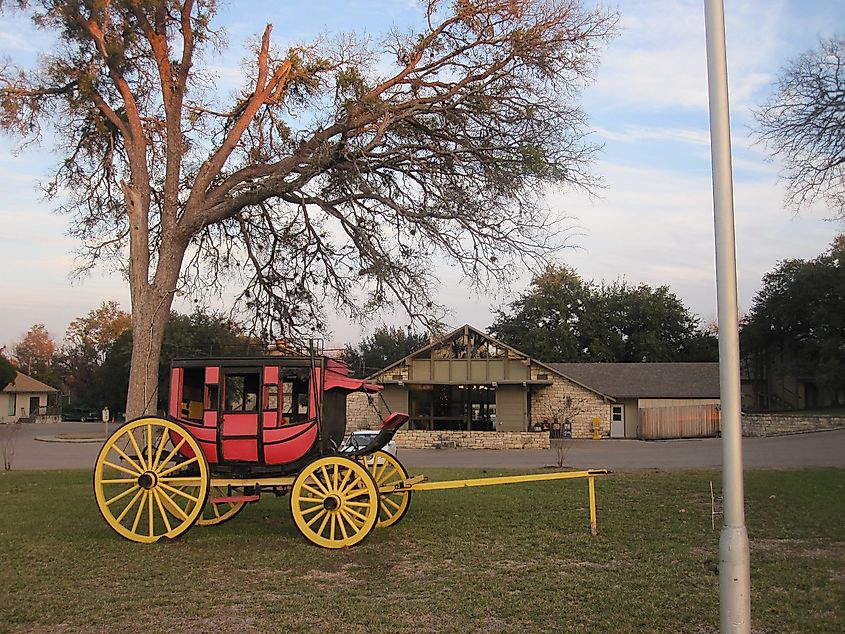
Straddling Salado Creek along Interstate 35, this village of approximately 1,994 residents maintains a refined atmosphere with dozens of galleries, boutiques, and historic buildings shaded by massive oak trees. Salado has cultivated a reputation as a shopping and arts destination while preserving structures dating to the 1850s.
The Stagecoach Inn (now operating as guest suites) represents Salado's early days as a stagecoach stop, with the original 1861 structure still standing on Main Street. Art lovers explore the Salado Sculpture Garden, an outdoor venue featuring rotating exhibitions of contemporary sculptures amid native landscaping. Tablerock Amphitheater hosts outdoor theatrical productions and concerts in a natural limestone setting.
For dining, The Range at The Barton House offers upscale Texas cuisine in a beautifully restored 1866 home, while Johnny's Steaks & Bar-Be-Que has served hungry travelers since 1991 in a rustic setting that captures Salado's welcoming spirit.
Jefferson

Once Texas' busiest inland port, Jefferson flourished during the steamboat era before a natural logjam on the Red River ended navigation in the 1870s. This town of about 1,994 residents froze in time, preserving over 70 structures on the National Register of Historic Places along brick-paved streets shaded by ancient live oaks.
Jefferson Historical Museum occupies the 1888 Federal Building, displaying artifacts from the town's prosperous steamboat days, including period clothing and vintage photographs. History enthusiasts stay at the Excelsior House Hotel, a Greek Revival structure built in the 1850s that has hosted presidents and robber barons, maintaining its historic character with period furnishings.
Auntie Skinner's Riverboat Club serves Cajun and Southern cuisine in a converted 1890s wholesale grocery building on the Big Cypress Bayou, while ghost tour companies lead evening walks through Jefferson's reportedly haunted historic district. For a journey into Jefferson's storied — and reportedly spectral — past, take a tour of The Grove, an 1861 Greek Revival home listed on the National Register of Historic Places, where fascinating history and ghost stories shared by the owners have been part of its legacy for over a century.
Boerne
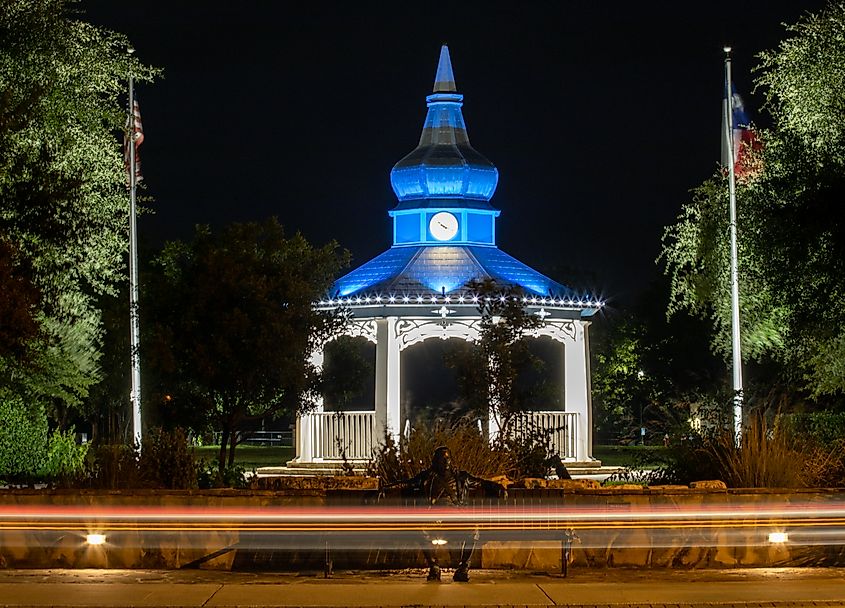
Pronounced BUR-nee, this Hill Country town of approximately 23,868 residents combines German heritage with modern amenities. Boerne's historic downtown along Hauptstrasse (Main Street) features limestone buildings from the 1850s, while its proximity to San Antonio makes it a popular day-trip destination.
Cibolo Nature Center & Farm spans 100 acres with hiking trails, historic buildings, and a working demonstration farm showcasing Texas Hill Country ecology and pioneer life. Cave Without a Name offers guided tours through stunning underground formations discovered accidentally by a boy and his dog in 1939.
On Sundays from May through September, locals gather to hear the Boerne Village Band (est. 1860) perform in the Park at Main Plaza. The Dodging Duck Brewhaus serves German-inspired cuisine and craft beers in a lively atmosphere, while The Dienger Trading Co. occupies an 1860 mercantile building now housing a restaurant and bar with exposed limestone walls.
Bandera
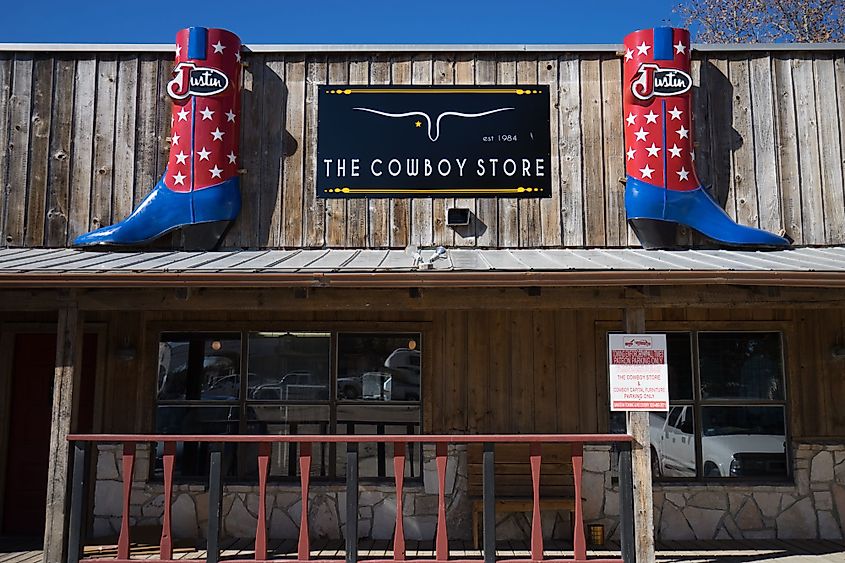
Calling itself the "Cowboy Capital of the World," Bandera embraces its ranching heritage with weekly rodeos and more dude ranches per capita than anywhere else in Texas. This Medina River town of about 850 residents offers authentic Western experiences beneath the cypress-covered hills northwest of San Antonio.
Frontier Times Museum displays an eclectic collection of Western artifacts, from spurs and saddles to a shrunken head, housed in a building constructed from native limestone. The Bandera County Courthouse, built in 1890 of locally quarried limestone, anchors the downtown square. Hill Country State Natural Area provides 5,400 acres of rugged terrain for horseback riding, hiking, and mountain biking through classic Texas Hill Country landscape.
Thursday through Saturday nights, Arkey Blue's Silver Dollar Saloon comes alive with live country music and two-stepping on a worn dance floor that's seen decades of boots, while O.S.T. Restaurant serves chicken-fried steak and other Texas staples in a casual, family-friendly atmosphere since 1921.
Port Aransas
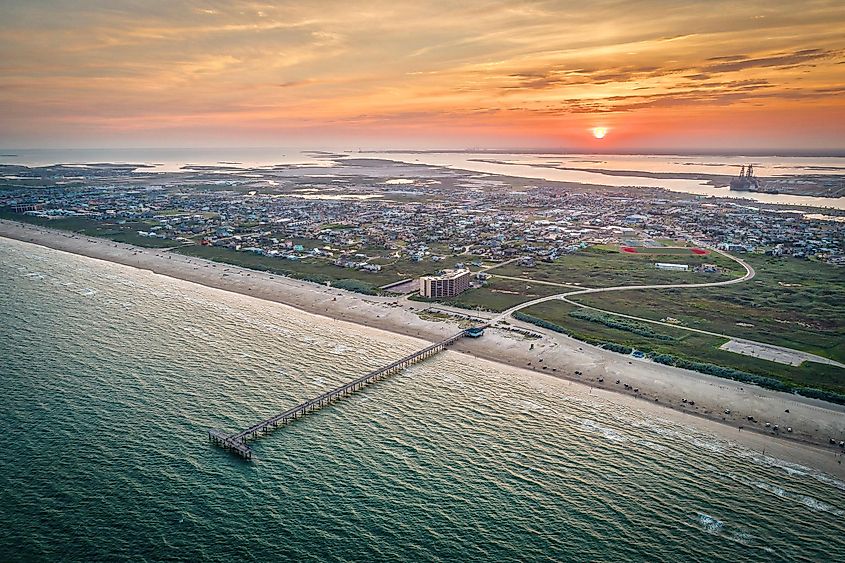
This barrier island town of approximately 3,788 residents offers beach life with a laid-back fishing village vibe. Port Aransas, known locally as "Port A," provides access to miles of Gulf beaches while maintaining a more relaxed atmosphere than nearby South Padre Island.
Mustang Island State Park preserves five miles of natural coastline for swimming, fishing, and bird-watching, with dunes and coastal prairie supporting diverse wildlife. The Port Aransas Nature Preserve at Charlie's Pasture offers boardwalk trails through 165 acres of coastal habitat, hosting over 300 bird species. Charter boats depart daily from the harbor for deep-sea fishing expeditions, while the free Port Aransas Ferry connects the island to the mainland, with dolphins often swimming alongside.
Lisabella's Bistro serves seafood and Italian dishes in an upscale yet casual setting, while Coffee Waves provides morning caffeine and breakfast tacos to locals and beach-goers gathering before hitting the sand. For an exceptional nature experience, visit the Leonabelle Turnbull Birding Center, where a boardwalk and observation tower provide panoramic views of diverse birdlife, resident alligators, and fish in the protected marshlands.
Rockport

Where Aransas Bay meets the Gulf, Rockport (population roughly 11,296) has evolved from a fishing village into an arts community and birding destination. The town's protected harbor, massive live oaks, and waterfront location create a relaxed coastal atmosphere perfect for artists, anglers, and nature lovers.
The Texas Maritime Museum chronicles the state's seafaring history with exhibits on shipwrecks, offshore drilling, and commercial fishing. Just north of Rockport, Goose Island State Park protects 321 acres of pristine Gulf Coast habitat, offering exceptional birdwatching, fishing from a 1,620-foot pier, and the chance to see the "Big Tree," a massive, thousand-year-old coastal live oak.
Rockport Beach offers a Blue Wave-certified beach with calm, shallow waters ideal for families, along with playgrounds and picnic areas shaded by ancient oaks. Charlotte Plummer's Seafare Restaurant has served fresh Gulf seafood since 1986 in a no-frills setting where the food speaks for itself, while Latitude 28°02 offers upscale coastal cuisine with harbor views from its second-story dining room.
Granbury
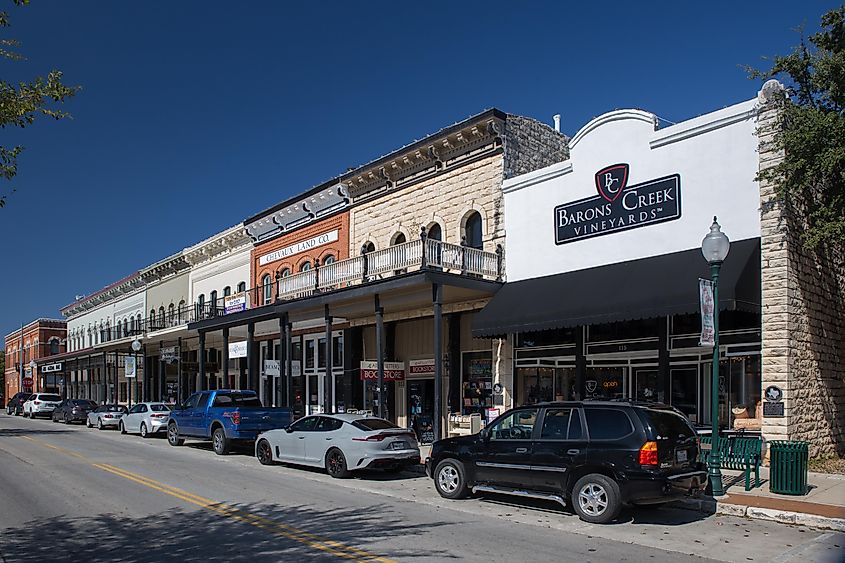
Built around a historic town square and the shores of Lake Granbury, this town of approximately 13,405 residents combines 19th-century architecture with modern lakeside recreation. The Historic Granbury Square features Texas' second-oldest continuously operating courthouse, built in 1891, surrounded by restored buildings housing shops, restaurants, and theaters.
Granbury Opera House, constructed in 1886, continues presenting live theater productions in an intimate Victorian setting with original pressed-tin ceilings and wooden floors. The Granbury City Beach Park on Lake Granbury provides swimming, paddleboarding, and picnicking along sandy shores. History buffs visit Acton Cemetery to see the grave of Daisy Fay "Elizabeth" Crockett, widow of Alamo defender Davy Crockett.
Babe's Chicken Dinner House serves family-style Southern comfort food including fried chicken and biscuits in a restored historic building, while Firehouse Subs Granbury operates in the town's beautifully preserved 1880s limestone jail building, giving diners a unique historical setting for a casual meal.
Discovering Texas' Small-Town Treasures
Texas' cutest small towns reveal the state's remarkable diversity beyond its big-city stereotypes. From German Hill Country villages where polka music drifts from beer gardens to remote desert art colonies and coastal fishing communities, each town offers distinctive experiences rooted in local history and landscape.
These communities prove that Texas charm isn't measured in square miles but in the warmth of welcome, the preservation of heritage, and the authentic character that makes each visit memorable. Whether you're seeking weekend getaways or planning a longer exploration of the Lone Star State, these small towns provide windows into the many faces of Texas.
